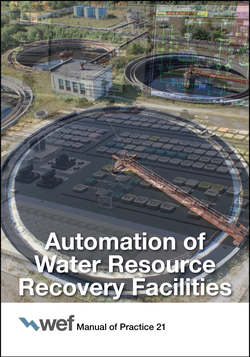Читать книгу Automation of Water Resource Recovery Facilities - Water Environment Federation - Страница 25
2.1.3 Chemical Savings
ОглавлениеMany WRRFs could save chemicals by implementing closed-loop control of chemical dosing. Closed-loop control is where an instrument monitors the process output (such as residual chlorine) and a controller adjusts a process input (such as hypochlorite pump speed) to maintain a desired process output. This type of control can often provide better performance with less wasted chemicals. For example, in the chlorination process, changes in flow and effluent quality result in varying chlorine demand. If the automation system can match this demand, substantial savings in chlorine are possible. Accurate estimates of these savings, however, are needed to make good design decisions for automation; typically, closed-loop control of chemical addition saves 10 to 20% of chemical costs.
Facility size can affect the economics of implementing closed-loop chemical control. Reducing chemical usage by 1.0 mg/L of chlorine at a 378-ML/d (100-mgd) WRRF, for example, could justify the cost of several chlorine analyzers, a controller, and a part-time technician, with substantial savings left over. Reducing chemical usage by 1.0 mg/L of chlorine at a 0.4-ML/d (0.1-mgd) WRRF, however, may not justify the installation of any automation equipment.
An optimization project implemented at the Morris Forman Water Quality Treatment Center in Louisville, Kentucky, modified the polymer dosing control strategy for the treatment center’s centrifuges, where the polymer dosing was adjusted based on total suspended solids in the sludge feed and centrate. This system resulted in a savings of 11.7% of polymer usage, lower recycle rates, a higher percentage of dry solids in the cake, and higher consistency in the cake (Bates and Montoya, 2010).
